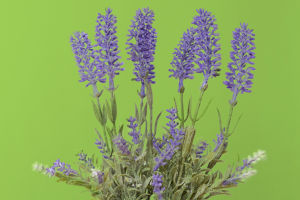The lotus flower is known for its outer beauty and inner strength. A plant from ancient times, it endured abrupt environmental changes and survived the cold of the glacial era, allowing today's humans to admire its beauty.
Often referred to as a "living fossil," the lotus is among today's earliest flowering plants.
Despite its delicate appearance, the tiny lotus flower holds a remarkable secret: water droplets cannot linger on its surface, ensuring it remains unstained despite emerging from the mud.
The lotus leaf plays a crucial role as a soil cleanser. Its hydrophobic surface prevents rain from staining the leaf, instead forming small droplets that swiftly roll off, cleansing the surface from mud, dust, and other impurities, maintaining the lotus flower's pristine appearance throughout its life.
The mystery behind the lotus leaf's water-repellent nature becomes clear at the microscopic level. Under an ultra-high-resolution microscope, the originally smooth green lotus leaves transform into a dispersed arrangement of almost spherical structures called papillae.
Each papilla, approximately 10 microns in size, is three to four times finer than a human hair, making it invisible to the human eye but crucial to the lotus leaf's unique properties.
With a 500-fold magnification, the intricate network of papillae reveals itself, resembling coral formations. Now, at a 10,000-fold magnification, the papillae display rod-shaped structures, each about 1 micron long and 0.1 micron in diameter. This microstructure is responsible for the lotus leaf's superhydrophobic nature.
Imagine each papilla as a mountaintop, and valleys forming between them. Around 10 microns in size, these peaks and valleys trap air, creating interconnected air cushions.
The papilla peaks hold water droplets together, preventing them from spreading on the lotus leaf's surface. Instead, they coalesce into small droplets, allowing dirt or dust to stick to them and be carried away as the droplets roll down the leaf's surface.
This extraordinary microstructure keeps the lotus leaf clean and has inspired biomimicry, leading to the development of superhydrophobic materials for everyday use.
Available online, clothing items treated with a lotus leaf effect effectively repel liquids like beverage spills and can be easily rinsed clean.
As science and technology progress, these superhydrophobic biomimetic materials are poised to become integral to our daily lives. They are applied on building surfaces, glass tiles, and car exteriors, making them effortlessly clean and enhancing durability.


